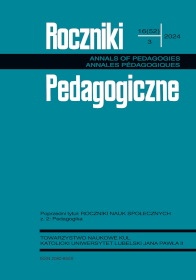Biała laska jako element społecznego wizerunku osób z niepełnosprawnością wzroku
The White Cane as an Element of a Social Image of Persons with Visual Impairment
Author(s): Kornelia CzerwińskaSubject(s): Social Sciences, Sociology, Social Norms / Social Control
Published by: Towarzystwo Naukowe KUL & Katolicki Uniwersytet Lubelski Jana Pawła II
Keywords: visual impairment; blindness; white cane; stigma; body
Summary/Abstract: A white cane is a traditional tool facilitating mobility of persons with visual impairment as well as a socially established symbol of blindness. The aim of the article is to present the diverse experiences of persons with visual impairment while using a white cane, including social and cultural determinants of negative attitudes toward this mobility tool as an element of a public image. A broad variety of blind and low vision persons’ attitudes towards using a white cane has been observed. For some of them the white cane is an integral element of their daily image by which they publicly manifest their competence in the area of independent and safe mobility. For them, the efficient us of the white cane is an experience liberating them from the limitations of their impaired body. The esthetic aspects of the white cane are particularly important for women with visual impairment – for them it is one of vital elements of self-presentation. For some other study subjects, especially persons with low vision and those losing sight, the white cane is a visible symbol of body defect. They experience internal conflict between the need to use the cane for safety reasons and the fear of social stigmatization. It is recommended that interdisciplinary studies are conducted on social and cultural aspects of mobility with a white cane.
Journal: Roczniki Pedagogiczne
- Issue Year: 16/2024
- Issue No: 3
- Page Range: 67-78
- Page Count: 12
- Language: Polish

